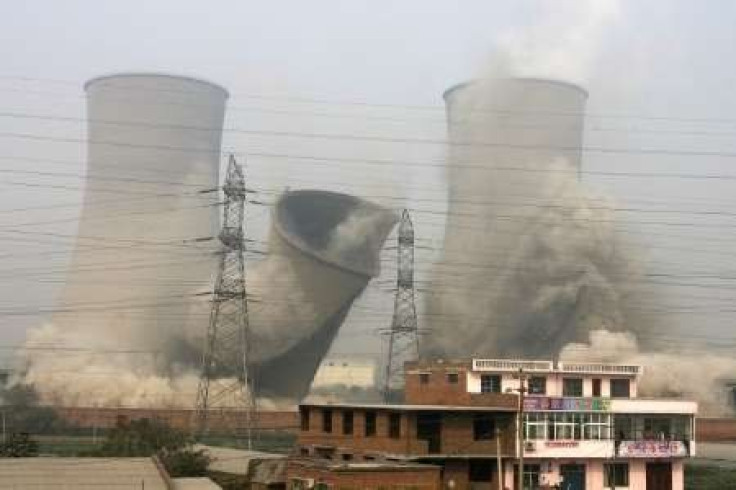Analysis: China regions defy caution to push for carbon trade

China's provinces are drawing up plans to launch local carbon trading platforms in the next five years, but as caution prevails in Beijing, none of the ideas are likely to create products of interest to overseas buyers.
I think for now this is quite an experimental period of time and local enthusiasm has been encouraged, said Changhua Wu, greater China director with the London-based Climate Group.
I think there will be a national (platform) eventually but at the moment, there will be experiments in some regions.
One thing though is clear: China plans to cut carbon intensity -- the CO2 produced per unit of GDP growth -- by 40-45 percent from 2005 to 2020 -- and needs local ideas on how to meet the goal.
Proposals from across the country have flooded into the country's central planning agency, with Jiangxi in the east, Hebei in the north, Sichuan in the southwest, and Guangdong in the southeast all aiming to get the go-ahead when China's parliament convenes in March.
A national plan is expected to just suggest a commitment to the use of market mechanisms in climate change mitigation efforts. Su Wei, director general of the climate change department at the National Development and Reform Commission, said in January that details would probably not emerge until the end of the year.
The expected vagueness from Beijing makes for an opening for provinces where equitability is seen as the biggest challenge for adoption of a national carbon reduction goal, said ZhongXiang, Zhang, carbon expert with the East-West Center in Hawaii.
It's likely that some carbon intensive provinces and sectors will end up thinking that their targets are very unfair, he said.
PILOT ZONES
Current platforms such as the European Emissions Trading Scheme, allow big greenhouse gas emitters to buy carbon credits in order to meet mandatory reduction targets.
Much of the trade has been in certified emission reductions (CERs), a key element of the U.N.-backed Clean Development Mechanism that allows industrialized nations to meet their CO2 targets by investing in clean projects in the developing world.
However, while China has supplied the majority of CERs now traded in Europe, local firms are not allowed to buy and sell.
Attempts by local environmental exchanges to set up carbon products have been unsuccessful domestically or internationally as China remains reluctant to submit industries to the sort of monitoring required to ensure legitimate carbon credits.
But the NDRC issued a document last August calling on 13 pilot low-carbon provinces and cities to draw up a variety of emission reduction strategies and study the use of market mechanisms. Final plans are expected in March.
Wu said some of the 13 volunteer regions were already eager to go forward -- especially Guangdong.
The province, one of China's richest, said it would strive for state support to develop a pilot emissions trading program.
What they are proposing now is total energy consumption controls within 11 cities in the Pearl River Delta -- if they exceed the cap they will have to buy (credits). That's what they mean by a trading platform, but it isn't carbon trading, Wu said.
Beyond the chosen 13, other cities and provinces -- worried about the costs of complying with tough new CO2 intensity limits -- are hoping to set up exchanges that will eventually benefit from any mandatory national cap and trade regime.
Hebei in northern China, which submitted emission market proposals to the central government late last year, hopes some kind of exchange will drive its industry restructuring plans.
Local authorities might be persuaded to shut dirty but profitable steel mills if they are given CO2 credits in return.
The province also hopes a carbon market will help it avoid a repetition of last year, when it had to cut power to hundreds of local firms in a last-ditch effort to meet efficiency targets.
GOING IT ALONE?
Allan Zhang, head of sustainable business solutions at PriceWaterhouseCoopers in Beijing, said some regions might seek to go it alone, noting that the central government has already allowed a certain level of autonomy on the issue.
In theory that is a possibility but in China it is less likely to happen -- if the central government is not happy it will be difficult.
In any case, the provinces might be overestimating the profitability of carbon trading. Of the 20 exchanges already in existence, not one is making any money.
They are mistaken if they think these platforms are used to earn profits: meeting the target is the important thing, not making money, said Zhang of the East-West Center.
Most experts suggest the market is most likely to begin with one or two central government programs involving state-owned firms in carbon-intensive sectors like steel or power generation, or in big energy-guzzling provinces like Hebei or Guangdong.
Officials told local media last year that China could first allow power plants within state-owned utilities to trade credits with each other, thus allaying industry concerns about high compliance costs.
Down the road, there is going to be one national trading market, whatever that is going to be, and it won't be any of the current platforms, said Wu.
© Copyright Thomson Reuters 2024. All rights reserved.











